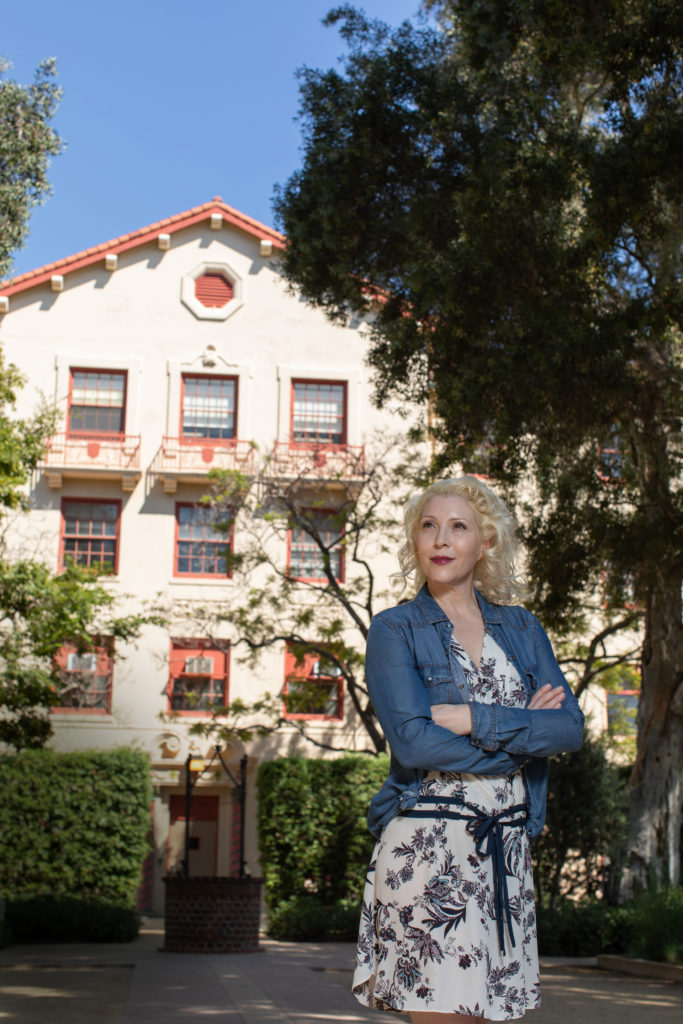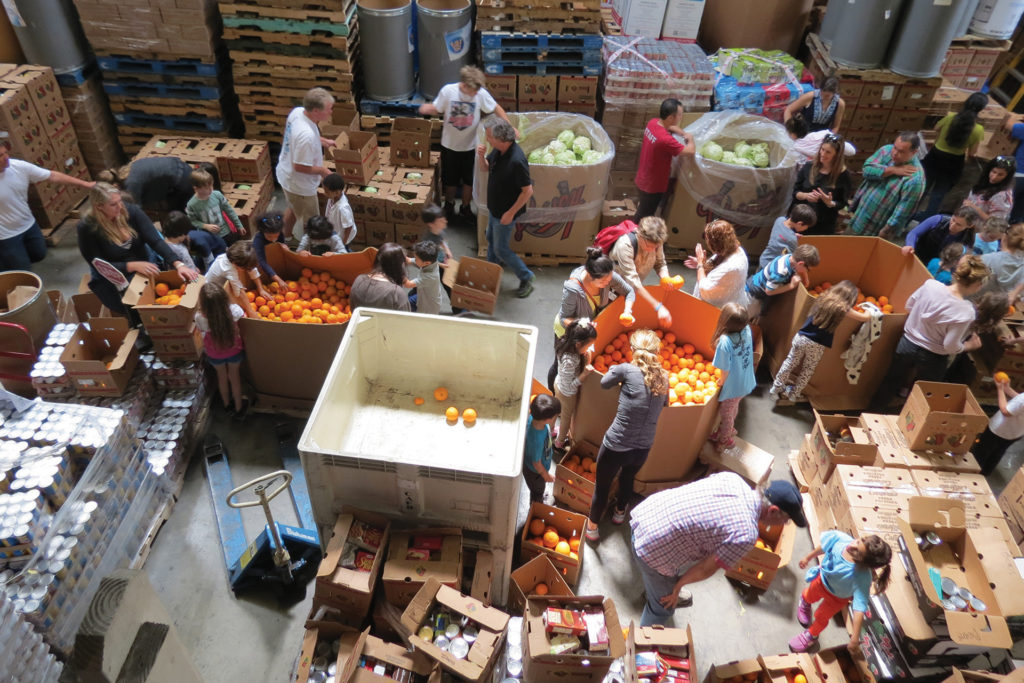On the Front Lines

BY TRAVIS MARSHALL / PHOTOGRAPHED BY KRISTIN ANDERSON
Growing up in a military family, Diana Helena Martin felt a sense of duty that drove her to join the Navy at 19 years old. She worked on an aviation crash salvage and rescue team while serving aboard the USS Tarawa and the USS Bonhomme Richard. But when she was sexually assaulted in the military, she decided that she needed to find a new path for herself outside the military. It wasn’t until years later, when she was in the midst of a challenging divorce and fighting for custody of her two children, now ages 10 and 7, that Martin recognized the impact that post-traumatic stress disorder (PTSD) was having on her life. “Off and on, I would realize that I needed to confront the PTSD from being assaulted, but I never really got the push I needed,” she says. “During the divorce, there was a push from all sides. I needed help for me and for my kids, and that’s how I found the Veteran Family Wellness Center.” Among Veterans Administration (VA) services, the UCLA/VA Veteran Family Wellness Center (VFWC) is unique. The program, which is located on the sprawling West L.A. VA campus, provides support for veterans and their families rather than focusing on medical or psychiatric care only for veterans themselves. The VFWC uses a model called FOCUS (Families OverComing Under Stress), developed by Harvard University and the Semel Institute of Neuroscience, to build resilience and wellness through counseling, classes and community-focused events. “When I got there, they really assessed the PTSD aspect of what I was going through and took the time to figure out what would help,” Martin says. She and her children participated in therapy sessions and took classes, such as a skills-building class to help strengthen their family unit, communicate better and plan their future as a family. “It was such a huge transformation for all of us. It was totally what we needed in our lives at that time.” In 2019 Saint John’s Health Center Foundation made a commitment to support organizations in the community that work with veterans on issues like PTSD, homelessness, food insecurity and transitioning into civilian life. To fulfill that commitment, the foundation provided grants through its Community Impact Fund (CIF) to both the VFWC and the Westside Food Bank, a Santa Monicabased nonprofit that supplies food assistance to veterans directly and to organizations that offer food assistance to veterans around the community.

Support for Vets and Their Families
When the VFWC launched in August 2017, it became the first program of its kind in the nation committed to helping veterans and their families. “This was a departure from the traditional VA system,” says Tess Banko, executive director of the VFWC. “As we approach 19 years of continuous wartime campaigns, the need for attention to the well-being of veterans and their families is growing.” The VFWC was designed to strengthen veterans and their families as they make stressful transitions, like moving into permanent housing, seeking treatment for PTSD or integrating back into civilian life. “Rather than psychotherapy and medication, the VFWC provides resilience-based wellness training,” Banko says. “The CIF grant has been instrumental in helping us provide innovative tools that meet veterans and families where they are.” Through the CIF grant, the VFWC has launched a tele-wellness program that allows veterans throughout the city of Los Angeles to access the program’s services over the internet—even if they can’t physically get to the VA campus. “Los Angeles is a geographically challenged area,” Banko says. “Now we can send a link that lets our participants access services wherever they happen to be.” The funds have also helped the VFWC launch a new transition program that focuses on teaching resilience to veterans as they transition to new chapters of their life. The program teaches cognitive and psychological strategies to get veterans through tough times, such as the period immediately after leaving the military or when they are coping with injury or illness, Banko explains. They begin to form a new picture of the future. “The VA’s push to incorporate holistic wellness models and move away from medications whenever possible is something that hasn’t been done before.” As part of the UCLA/VA system, VFWC has a base budget through the UCLA chancellor’s office that covers basic program costs and staffing. “Anything else we need at the center for developing programming or enacting programs comes through fundraising and grants,” Banko says. “I can’t express how much the support of the Saint John’s Health Center Foundation and the CIF is appreciated because they’re making a direct impact on the lives of veterans and their families.”
Food Fundamentals
In addition to veterans and their families who struggle with the challenges of finding new direction and community support after their military service is over, there are also a growing number of veterans who lack the most fundamental needs—like food and a safe, affordable place to live. Bruce Rankin, executive director of Westside Food Bank, says there are around 4,000 homeless veterans in Los Angeles and that nearly 10% of the people served by the city’s food pantries are veterans. The Westside Food Bank, founded in 1981, distributes nearly 4.5 million pounds of food every year throughout its Westside service area. “The objective of any food bank is to use economies of scale to get large amounts of food at better prices so we can distribute to social service agencies and food pantries,” Rankin explains. “We provide food to about 70 different agencies in our service area, including many that work directly with veterans.” With an annual budget of $2.2 million, the Westside Food Bank gets most its funding from private organizations like Saint John’s Health Center Foundation, along with individual contributors. “Those two groups alone make up more than 70% of our funding,” Rankin says. “Given that we spend nearly $1 million on food each year and a minimum 20% of our service—including produce— goes to vets, the gift from the CIF provides close to half of what we spend on produce for veterans every year.” Among those that work with the food bank are agencies that help veterans find transitional housing, including New Directions on the VA campus, the Salvation Army Westwood Transitional Village and People Assisting the Homeless (PATH). The VA is currently working to expand available housing for veterans both on campus and in the community, and the Westside Food Bank recently launched its first direct service effort, providing food to veterans on campus through a pop-up food pantry. “Every Thursday afternoon we serve up to 150 veterans, and our goal is to provide at least four types of fresh produce every week—usually more in the summer,” Rankin explains. “The program is expanding as we’re beginning discussions with the VA about moving the pop-up pantry to an indoor setting as more veterans can move onto campus.” The commitment to and focus on fresh produce was a key part of the decision to provide the CIF grant to the Westside Food Bank. “At least half of everything we distribute by weight from the food bank is fresh fruits and vegetables,” Rankin says. “The need for food assistance among veterans has increased a great deal in recent years, and the CIF grant was made to support the purchase and acquisition of fresh produce across the board for all of our agencies.” Serving veterans is special, he says, noting the L.A. veterans’ campus is one of the largest in the country. “The money from Saint John’s Health Center Foundation gets us closer to what we want to do for them.”
